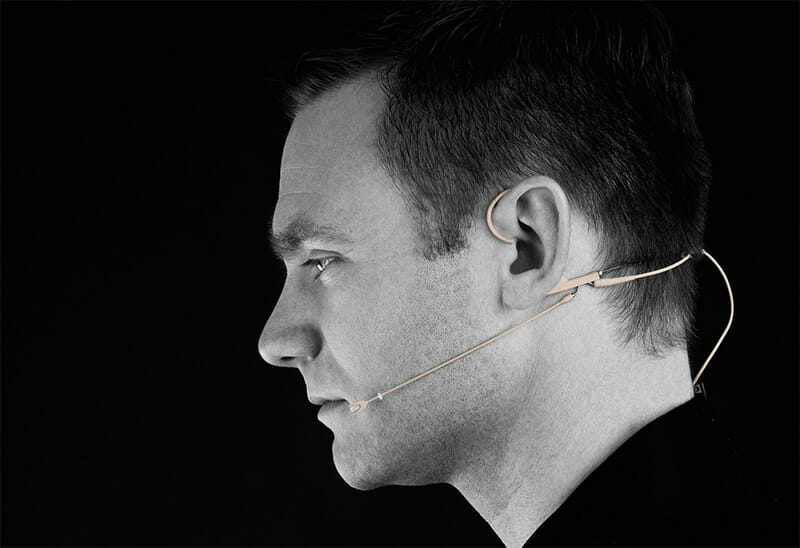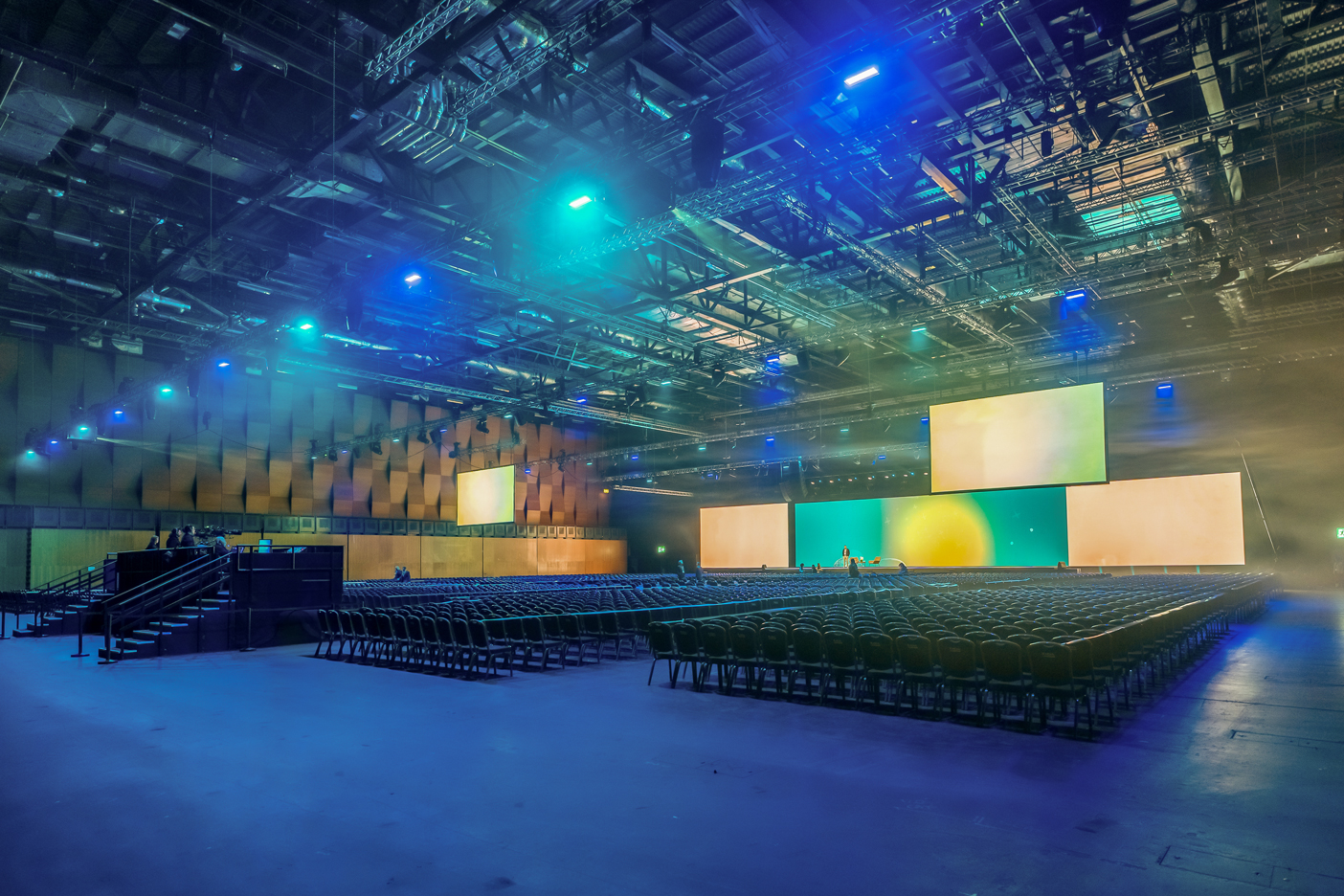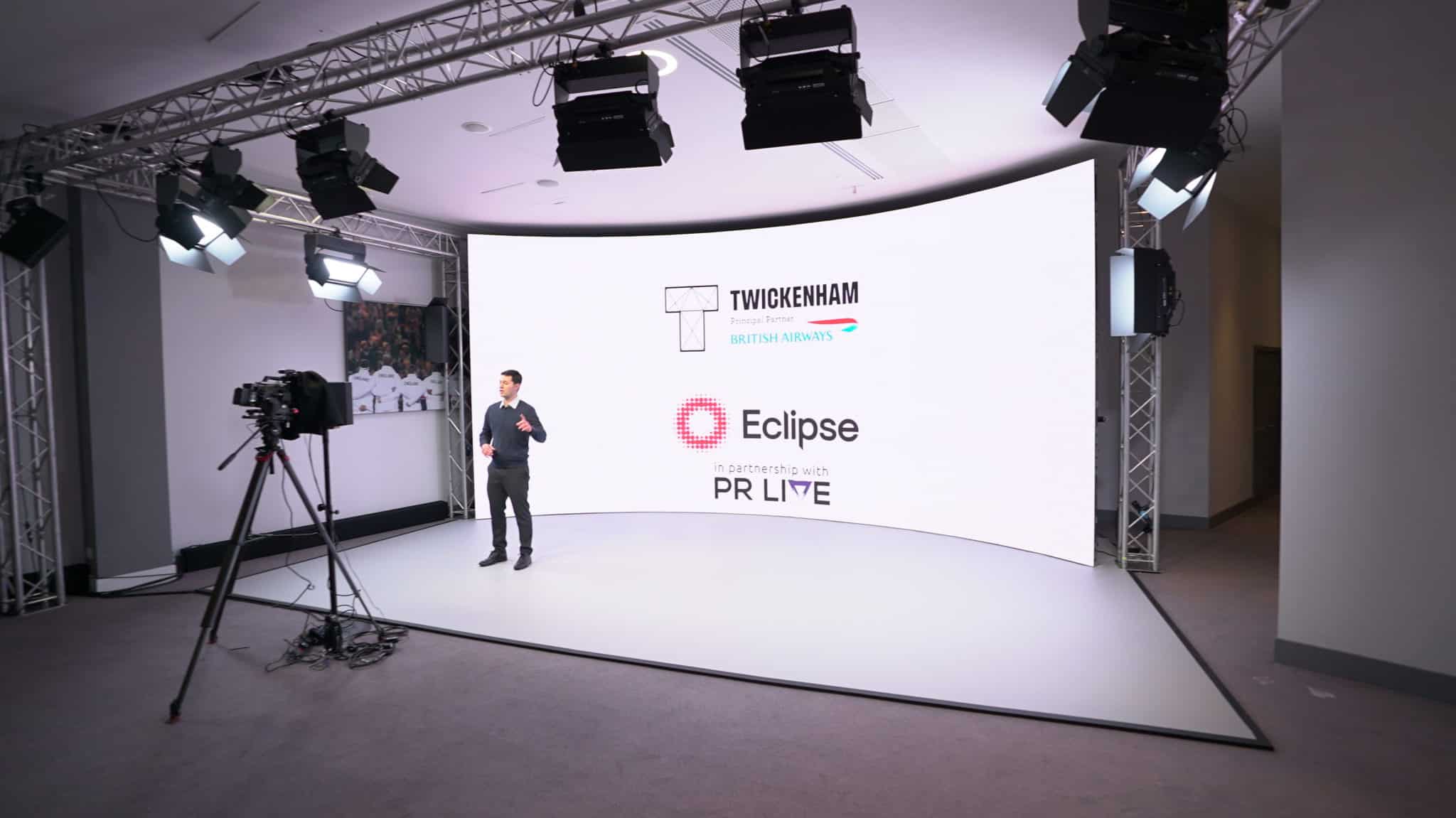How to choose the right microphone (and use it correctly!)
Whether you are organising an awards celebration, a conference or a presentation to a large audience, the chances are the presenter and other speakers will need to use microphones to ensure their voices are heard.
However, the wide range of options on the market is a double-edged sword: On one hand, there will be the perfect microphone for your purposes, but on the other, how do you know which one?
To help you choose the right microphone and, crucially, use it correctly, Will Griffiths, Technical Manager at Eclipse, has prepared this simple guide.
Microphone: Wireless Handheld.
Best for difficult acoustic spaces and loud environments.
Pros:
- Easiest to get volume out of (when used correctly).
- Generally lower sensitivity than lapel/headset mics, so less background noise picked up.
- Directional, i.e. they reject sound coming from behind the head of the microphone.
- Sound changes dramatically when distance from sound source is increased (in both volume and tone).
- Does not require fitting by a technician.
Cons
- Not hands free.
- Lower sensitivity means the mic must be closer to the sound source than other types.
How to use the Wireless Handheld correctly:
- DO: Speak directly into the mic, close to your mouth.
- DON’T: bang or tap on the mic to check that it is working – trust the engineer!
- DON’T: put the mic down carelessly – it can cause a loud bang, and potentially damage the mic.
- DON’T: cover or cup the head of the mic. This affects the pickup pattern and can cause feedback.
Microphone: Lavalier (a.k.a. Lapel, Tie Clip)
 Best for smaller events where acoustics are good and background noise will be at a minimum.
Best for smaller events where acoustics are good and background noise will be at a minimum.
Pros:
- Hands free.
- Discrete.
Cons:
- Difficult to get volume out of.
- Can be susceptible to background noise.
- It is a sensitive mic, so it picks up more distant sound sources than other mics and can be more susceptible to feedback than other types.
- It must be placed correctly on the speaker to pick up sound correctly.
- Requires somewhere to clip both the mic and the transmitter pack.
- As the mic is mounted to clothing, it has the potential to get brushed or knocked by clothing, hair or jewellery, or even to get knocked off altogether.
How to use a Lavalier correctly:
- DO: Wear suitable clothing. The microphone needs to be clipped to something between 6-10 inches from the mouth, ideally central to the body. The transmitter pack needs to either go in a pocket, or be clipped to a belt/waistband/the back of a dress or shirt. Some female speakers/performers will clip this to their underwear when no other options are available. Eclipse can provide pouches on request which can be tied around the waist.
- DO: Speak loudly and clearly. Imagine you aren’t wearing a microphone – the mic is there to reinforce your voice, not replace it.
- DON’T: tap the microphone. It is very sensitive, and this will be louder than you expect, and can damage the mic or speakers.
- DON’T: take off the mic and hold it close to your mouth to try and get more volume. This will distort the microphone and pick up a lot of pops and hisses from your mouth.
- DON’T: forget to return the microphone to the technical team before you leave the event! If you can, please give it back to the person who fitted it, rather than leaving it somewhere – they can be hard to find in a big room!
- DON’T: take the microphone off yourself or switch it off before going on stage. The engineer will mute the mic until you are on, and if you replace the mic yourself incorrectly this can cause issues.
Microphone: Headset
Best for events in difficult acoustic spaces and noisy environments where speakers need to have hands free.
Pros:
- The headset can be placed close to the mouth, meaning they do not need to be as sensitive as lavalier mics.
- The mic is always the same distance from the mouth, so the volume and tone of the sound never changes.
- As the mic is fitted around the face, there is much less chance of it being hit or brushed by hair, hands or clothing. Liked by sound engineers.
Cons:
- It can take longer to fit than a lavalier mic.
- Some presenters find these uncomfortable (although this is a common assumption, and higher end headset mics can be very comfortable).
- It is less discrete than a lavalier mic.
How to use a Headset correctly:
- DO: Wear suitable clothing. Unlike the lavalier mic, no particular clothing is required to clip the mic to, but the transmitter still needs somewhere to go.
- DO: speak loudly and clearly, as with the lavalier.
- DON’T: forget to return the microphone to the technician, as with the lavalier.
- DON’T: take the microphone off yourself or switch it off before going on stage. If you are not used to using these mics then it can be difficult to fit it yourself without assistance.










